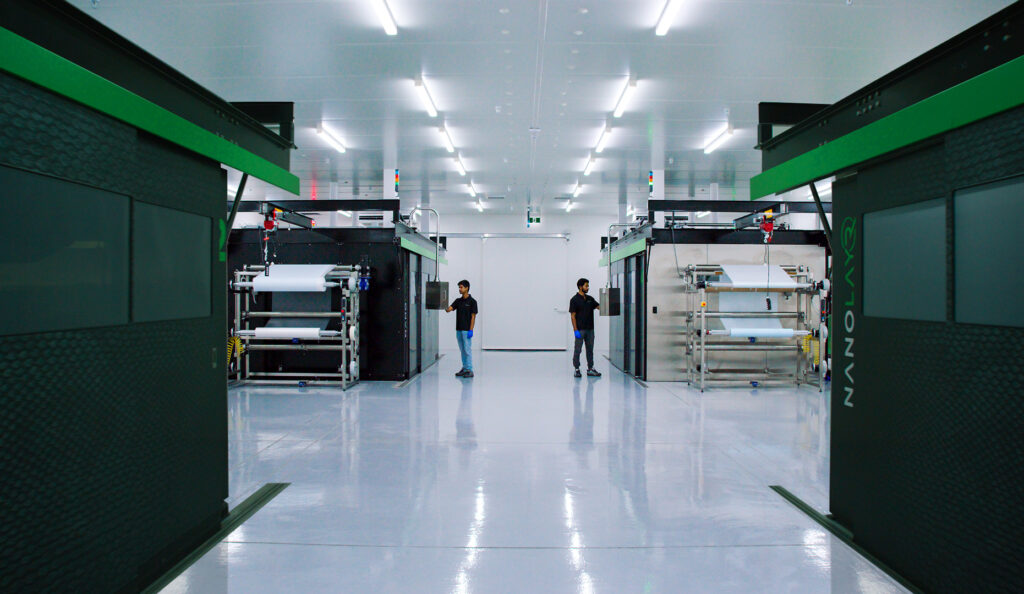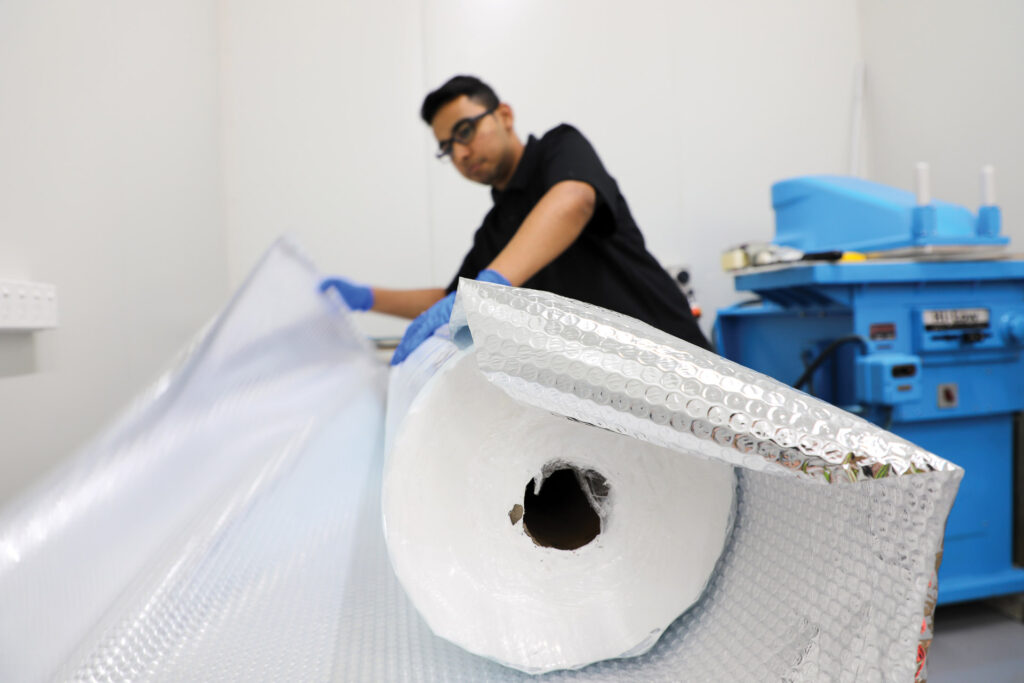FilterLayr
The Insights Behind Bringing A New Nanofibre Application To Life
November 23, 2021
Nanofibre Comes To Life
The applications for nanofibre are enormous. However, NanoLayr is focused on developing nanofibre products that make a significant difference in society, have a positive impact on the lives of as many people as possible, and offer a distinct performance edge.
The process for developing a new application at NanoLayr is a complex one, but in short it goes something like this:

There are many steps and finer details in between – and what better way to provide a more in-depth rundown of the process than the example of NanoLayr’s response to the Covid-19 pandemic.
Last year, demand for protective facemasks was at an unprecedented level due to the pandemic. As a result, wearing a facemask is now widely accepted in society. However, good quality masks are in even higher demand, yet short supply.
With this in mind, NanoLayr developed a specialist product advancement in the form of an anti-microbial filter application for use in facemasks.
With many non-certified face masks not having the ability to filter out small sized particles, this meant they were not as effective in protecting the wearer against coronavirus which has particles of around 150 nanometre in size.
Nanofibre is incredibly effective at protecting against viruses such as Covid, as well as bacteria and other toxic particles, because the diameter of its fibres range from between 10 – 300 nanometres.
We also discovered that, when non-antimicrobial filters and facemasks capture and harbour microbes, they are prone to contributing to further spread in the environment.
So it was necessary for our new filter application to actively kill the bacteria and viruses that are captured to prevent their repeated spread.
Using our award winning proprietary sonic electrospinning technology manufacturing process, nanofibres have the ability to carry high loadings of functional additives. It was possible to incorporate antimicrobial additives into the nanofibres to provide antibacterial and antiviral functionalities.

To make the air filters even more desirable for use in facemasks, we incorporated naturally occurring non-toxic organic actives such as manuka oil, tea tree oil, and lemongrass (known as terpenoids) into our bactericidal and viricidal air filter media.
These functional actives are bound and contained within the nanofibres resulting in a more durable and longer lasting functional active.
The naturally occurring bioactives are in stark contrast to other products in the market that use antimicrobial agents such as metal and metal oxides which are potentially toxic.
In addition to stopping bacteria and viruses from passing through the filter, any bacteria or viruses trapped in the nanofibre layer are actively killed resulting in a facemask fabric with self-decontaminating functionality and a longer useable life.
Furthermore, nanofibre materials have a highly porous and 3D structure, low density, and small pore sizes. This makes masks containing nanofibres typically easier to breathe through.
The final step was to take our antimicrobial filter media from the lab and testing rig to the next level and be able to produce it at scale.


Using our award-winning, Sonic Electrospinning Technology process, which is one of the most robust and adaptable methods in the world, it enables us to mass produce anti-microbial FilterLayr in large units to help meet global demand.
For further information our air filtration functional fabrics check out FilterLayr in Halolife Masks, FilterLayr in HRV Home Ventilation system or flick us your enquiry on how to gain a competitive edge by just adding a LAYR today!